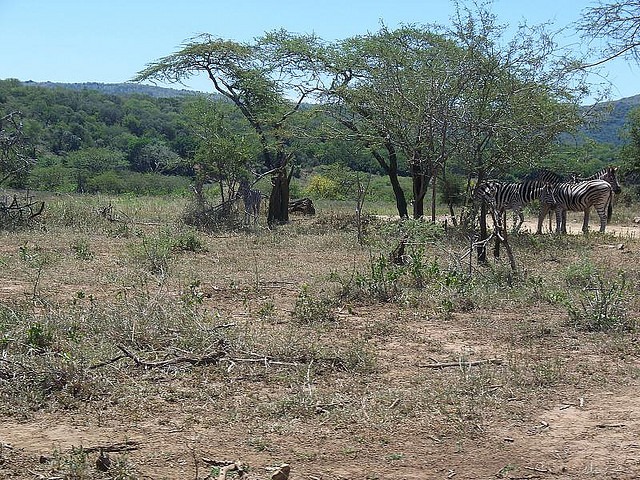 There are two main schools of thought when it comes to oil supply. There are those who believe that oil supplies are strictly limited and that we have passed the peak and will soon (40 to 60 years) run out of oil with which to power our vehicles. Then are those who believe supplies could last much longer than current predictions suggest. The latter school of thought believes there are either reserves that are simply too expensive to extract at today’s oil prices but they will be tapped ultimately or they believe that new sources will be found as the pressure rises. There is actually a third school of thought: those who believe oil is not a fossil fuel at all, but a continuously renewed material that will never run out, but that’s a different story.
There are two main schools of thought when it comes to oil supply. There are those who believe that oil supplies are strictly limited and that we have passed the peak and will soon (40 to 60 years) run out of oil with which to power our vehicles. Then are those who believe supplies could last much longer than current predictions suggest. The latter school of thought believes there are either reserves that are simply too expensive to extract at today’s oil prices but they will be tapped ultimately or they believe that new sources will be found as the pressure rises. There is actually a third school of thought: those who believe oil is not a fossil fuel at all, but a continuously renewed material that will never run out, but that’s a different story.
During the 20th century and now into the 2000s, petroleum has predominated in fuelling transport hinging on the enormous growth of chemical engineering and chemical technology since the beginning of the industrial revolution. Currently, fuels from crude oil is used to fulfil 96 to 98% of the worldwide energy demand for cars, ships and planes.
Whichever school makes the grade in the end shouldn’t really matter, as Chemical engineers Maria Sudiro and Alberto Bertucco of the University of Padova, Italy, and many others have pointed out:
The currently known reserves of methane and of coal exceed those of crude oil by factors of about 1.5 and 25, respectively.
They reckon any analysis of fuel supply and the potential for using biomass as a so-called renewable source is not quite as clearcut as one might imagine. They explain that the problem of producing synthetic liquid fuels by alternative routes to conventional petrochemical means is mixed. The industrial processes of Gas To Liquid (GTL), Coal To Liquid (CTL), and Biomass To Liquid (BTL) use natural gas, coal, and biomass as feedstocks, respectively, all with varying efficiencies and resulting energy densities.
Now, writing in the International Journal of Alternative Propulsion (2008, 2, 13-25), the researchers have modelled each process on a weight basis per unit of feedstock (natural gas, coal and biomass/wood). For hypothetical plants running at a production rate of 100 tonnes per hour, they found that yields are about 70, almost 33 and just under 17%, respectively. Moreover, the carbon dioxide emitted per unit mass of liquid fuel is a relatively low at 0.9 kg for GTL, almost 5 kg for CTL, and over 6 kg for BTL processes. So, on the face of it, it would seem that gas-to-liquid fuel beats coal and biomass hands down in terms of efficiency and carbon footprint.
Of course, in some sense, the use of biomass can be thought of as carbon neutral as it is purportedly a renewable resource. However, such fudging of any analysis always seems to ignore the environmental impact of sourcing the biomass, whether that is the assimilation of waste for conversion, the planting of fuel crops, and the energy use and waste products of the conversion process. So, truly no solution is entirely clearcut when one takes into account the complete lifecycle of the fuel production process, well-to-wheel, as it were.
At first, site gas to liquid, may not seem necessarily to be the perfect option. This is especially so if one takes into account costs and political issues, such as access to a ready supply for any region hoping to exploit GTL. As such, the Padova team has evaluated production costs of synthetic fuel in a GTL process. They considered two different scenarios: the case of a production plant close to a natural gas supply. The second case is of a GTL plant remote from the country with the gas supply.
Their financial analysis reveals that the return on investment for a GTL plant with a local supply occurs in less than two and a half years, whereas it is almost seven years if the supply is in a country remote to the manufacturer. They conclude that given our reliance on oil, its derivatives, and putatively petroleum substitutes (and despite hybrid and hydrogen):
The economical and financial analysis has shown that it is extremely convenient to invest in a GTL plant located in countries where natural gas is available at a low price, thanks to the favourable return of investment.
It could be that as biomass becomes more accessible, possibly to the detriment of food and water supply, that the BTL approach to fuel becomes more viable. However, given the abundance of natural gas and the potential to release that from locked in sources, such as frozen methane hydrates, GTL could be the way forward for some regions of the world faced with dwindling oil supplies, especially given the lower carbon footprint compared with liquid fuels derived from coal or biomass.
Sudiro, M., Bertucco, A. (2008). Production of synthetic gasoline and diesel fuels by alternative processes using natural gas, coal and biomass: process simulation and economic analysis. International Journal of Alternative Propulsion, 2(1), 13-25. DOI:
 This week, The Alchemist is digging in the dirt to find out about the carbon cycle and climate change, taking his whisky (or is it whiskey) with or without water, and discovering how to juggle molecules, on the other hand. Also in biochemical news this week, the crystal structure of a plant hormone receptor is revealed while researchers in Israel focus on blocking the protein misfolding that occurs in Alzheimer’s disease.
This week, The Alchemist is digging in the dirt to find out about the carbon cycle and climate change, taking his whisky (or is it whiskey) with or without water, and discovering how to juggle molecules, on the other hand. Also in biochemical news this week, the crystal structure of a plant hormone receptor is revealed while researchers in Israel focus on blocking the protein misfolding that occurs in Alzheimer’s disease. Dioxins Before Swine – Irish pork is off the menu, according to the BBC.
Dioxins Before Swine – Irish pork is off the menu, according to the BBC. The
The 
 Chernobyl. The very name strikes fear into the hearts of those who hate everything about the nuclear industry. It conjures up images of an archaic, burning industrial site spewing out lethal fumes, of farm animals dying of radiation poisoning in their thousands and contaminated meat, of ecosystems devastated, and of people with radiation sickness and for those spared the acutely fatal toxicity, the prospect of cancers to come and perhaps generations of mutations. But…
Chernobyl. The very name strikes fear into the hearts of those who hate everything about the nuclear industry. It conjures up images of an archaic, burning industrial site spewing out lethal fumes, of farm animals dying of radiation poisoning in their thousands and contaminated meat, of ecosystems devastated, and of people with radiation sickness and for those spared the acutely fatal toxicity, the prospect of cancers to come and perhaps generations of mutations. But… A discussion a while back, over
A discussion a while back, over  So, how’s that for a blog post title? Catchier even than last Saturday’s
So, how’s that for a blog post title? Catchier even than last Saturday’s  The green morals of UK motorists are currently being held to ransom by the government. The government hopes to increase vehicle taxes based on how much pollution a car produces – it’s a green tax, a carbon tax, call it what you will. Some drivers will end up paying twice as much each year to keep their car on the roads. The bigger the car, the theory goes, the more fuel it will use and so the more polluting it will be in terms of pumping out carbon dioxide and so the more
The green morals of UK motorists are currently being held to ransom by the government. The government hopes to increase vehicle taxes based on how much pollution a car produces – it’s a green tax, a carbon tax, call it what you will. Some drivers will end up paying twice as much each year to keep their car on the roads. The bigger the car, the theory goes, the more fuel it will use and so the more polluting it will be in terms of pumping out carbon dioxide and so the more  There are two main schools of thought when it comes to oil supply. There are those who believe that oil supplies are strictly limited and that we have passed the peak and will soon (40 to 60 years) run out of oil with which to power our vehicles. Then are those who believe supplies could last much longer than current predictions suggest. The latter school of thought believes there are either reserves that are simply too expensive to extract at today’s oil prices but they will be tapped ultimately or they believe that new sources will be found as the pressure rises. There is actually a third school of thought: those who believe oil is not a fossil fuel at all, but a continuously renewed material that will never run out, but that’s a different story.
There are two main schools of thought when it comes to oil supply. There are those who believe that oil supplies are strictly limited and that we have passed the peak and will soon (40 to 60 years) run out of oil with which to power our vehicles. Then are those who believe supplies could last much longer than current predictions suggest. The latter school of thought believes there are either reserves that are simply too expensive to extract at today’s oil prices but they will be tapped ultimately or they believe that new sources will be found as the pressure rises. There is actually a third school of thought: those who believe oil is not a fossil fuel at all, but a continuously renewed material that will never run out, but that’s a different story.